In the last few days there has been spectacular action in financial markets rippling across the entire world: bouncing between the US, Japan & emerging markets.
The market began behaving dramatically already last week in the US with big moves in the US Treasury market, the vast and supposedly solid bedrock of global finance. The volatility index in the US surged to levels only previously seen during the 2020 COVID shock and in 2008!
As hyperbolic as this seems, it clearly indicates the underlying level of uncertainty that is out there. And this was compounded by the shocking market reaction in Japan on Monday.
On Monday August 5 the Japanese stock market index, Topix, closed down 12%, its worse performance since 1987. The scale of the Japanese market, its interconnection with the global system and the size of the moves have sent shock waves. Japan’s investors are, on net, the largest lenders to the world economy. The country’s investors owned $10.6trn in foreign assets at the end of last year. Japanese investors are huge buyers of American and Australian securitized loans. What happens in Japan matters to the entire world economy.
As the Economist described it for us, we are witnessing in Japan in recent days the unwinding of a basic discrepancy that has immediately to do with the uneven and polarized recovery from COVID, but can be traced back a decade to the aftermath of 2008 and the divergence between US and Japanese monetary policy around 2012/3 and the taper tantrum.
Over the past 18 months the yen sank as America’s Federal Reserve raised interest rates and the Bank of Japan stood still. The “carry trade”, where investors borrow cheaply in yen to make higher-yielding investments in dollars or euros, flourished, sending the Japanese currency lower still (because once you borrow the Japanese yen, you sell them AT). The weaker currency then enhanced the foreign earnings of Japanese firms, and enticed foreign investors into the Japanese stockmarket. In 2023 and the first half of 2024, they snapped up ¥9trn ($60bn) in stocks.
Recently, the Bank of Japan had actually been intervening to try to stop the progressive devaluation of the yen. It succeeded too well. Now things are threatening suddenly to go into sharp reverse.
The yen has appreciated suddenly and strongly.
Other than fx intervention, the Bank of Japan has taken baby steps to tighten policy. On July 31st it raised its benchmark rate from around 0.1% to around 0.25%. By contrast, with the news out of the US increasingly gloomy and tech stocks selling off, the Fed is expected to begin cutting rates soon. The tepid jobs report on August 2nd reinforced that basic set of assumptions. That relative shift in expectations (rates up in Japan and down in the US) may be what has triggered the unwind. As expectations shift, the once profitable carry trade which involves borrowing in yen with low interest rates and a depreciating exchange rate, becomes a huge loss maker.
As the carry trade unwinds, it sets in motion a series of amplifying effects. Buying yen to close out the loss-making trade drives the yen upwards. That increases the pressure on those still holding the position. It does so both for those engaged in carry trade investment positions and those who were just betting on further depreciation of the yen.
As the yen surges, this threatens the profitability of Japanese exporters, who sell in dollars and repatriate their profits in yen. The tumbling market in Tokyo in turn unleashes a spiral there. As the Economist describes it:
“The spiking yen has, in turn, fuelled a stockmarket collapse. The rally had been led by Japan’s exporters, which benefit almost mechanically from a weaker currency, as they make most of their money overseas but report earnings in yen. Now they are suffering. Margin bets on Japanese stocks—trades made with borrowed money—had reached the highest level since 2006 before the sell-off began. These leveraged investments now appear to be being unwound at pace, explaining why market darlings are suffering some of the biggest falls. The share price of Tokyo Electron, a vital supplier of semiconductor kit, fell by 18% on August 5th. Japanese banks are down by 27% in the space of two trading days.”
Every stage of this unwind is driven by leverage. It is one thing to lose money on a trade. It is quite another to lose money that you have borrowed. And when that risk becomes more serious, what are triggered is the nightmare of all traders, the margin call i.e. the demand for more security to cover a loss-making trade.
How far has this to go? The relatively strong service sector numbers out of the US helped a bit. A stronger US economy lifts the mood generally and marginally weakens the case for Fed cuts. A Fed cut right now is a double-edged sword. It would signal that the Fed cares (the Fed put) but because it would narrow the margin between rates in the US and Japan it would further squeeze the carry trade in the yen.
As John Authers pointed out in his column, the yen carry trade is just one of a brace of trades that have gone south.
How far could this go and how far could it spread. There are not simple statistics monitoring the scale of the carry trade. But there are a variety of proxy indicators.
Pointer #1
There are still a lot of short positions in Yen which get hurt as the currency rises. And there are still a lot of long positions in US tech which get hurt as the market sells off. The “jaws” have some way to close.
Pointer #2
Don’t just look to the banks. As Daniela Gabor shows us with these data from ING, whereas before 2008 the yen carry trade was above all the preserve of big banks, their positions are now matched by a range of shadow banks, asset managers and hedge funds.
Pointer #3 So far the sell off is confined largely to equities. It has not spread to credit (loans, bonds etc). Us treasury market has continued to function as a hedge. If any of this changes, the situation is getting more serious.
Pointer #4 Don’t just look to the big economies.
The carry trade with the yen involved several emerging markets, including Mexico.
And as Robin Brooks points out, the ripple effect is also being seen in the more “peripheral” eurozone economies.
Pointer #5 Bitcoin is NO hedge against financial instability
Pointer #6 And there is the geopolitical upside (at least according to Branko M)
Does this all blow over? It may very well. Too soon to tell. There is also, however, room for a pretty major reset around the US tech stocks and their vast run up. And, the mechanics of this unwinding, point, once again, to the huge volatility that can be generated by financial markets in their current incarnation. The financialization of equity markets is a thought-provoking phrase I first heard on an episode of Odd Lots with Michael Purves, CEO and founder of Tallbacken Capital Advisors, and Josh Silva, managing partner and CIO at Passaic Partners. The news of the last few days has made me want to go back to revisit it.
I love writing Chartbook. I am delighted that it goes out for free to tens of thousands of readers around the world. In an exciting new initiative we have launched a Chinese edition of Chartbook, on which more in a later note. What supports this activity are the generous donations of active subscribers. Click the button below to see the standard subscription rates. I keep the rates as low as substack allows, to ensure that backing Chartbook costs no more than a single cup of Starbucks per month. If you can swing it, your support would be much appreciated.

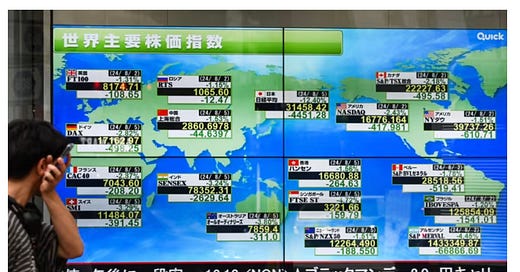



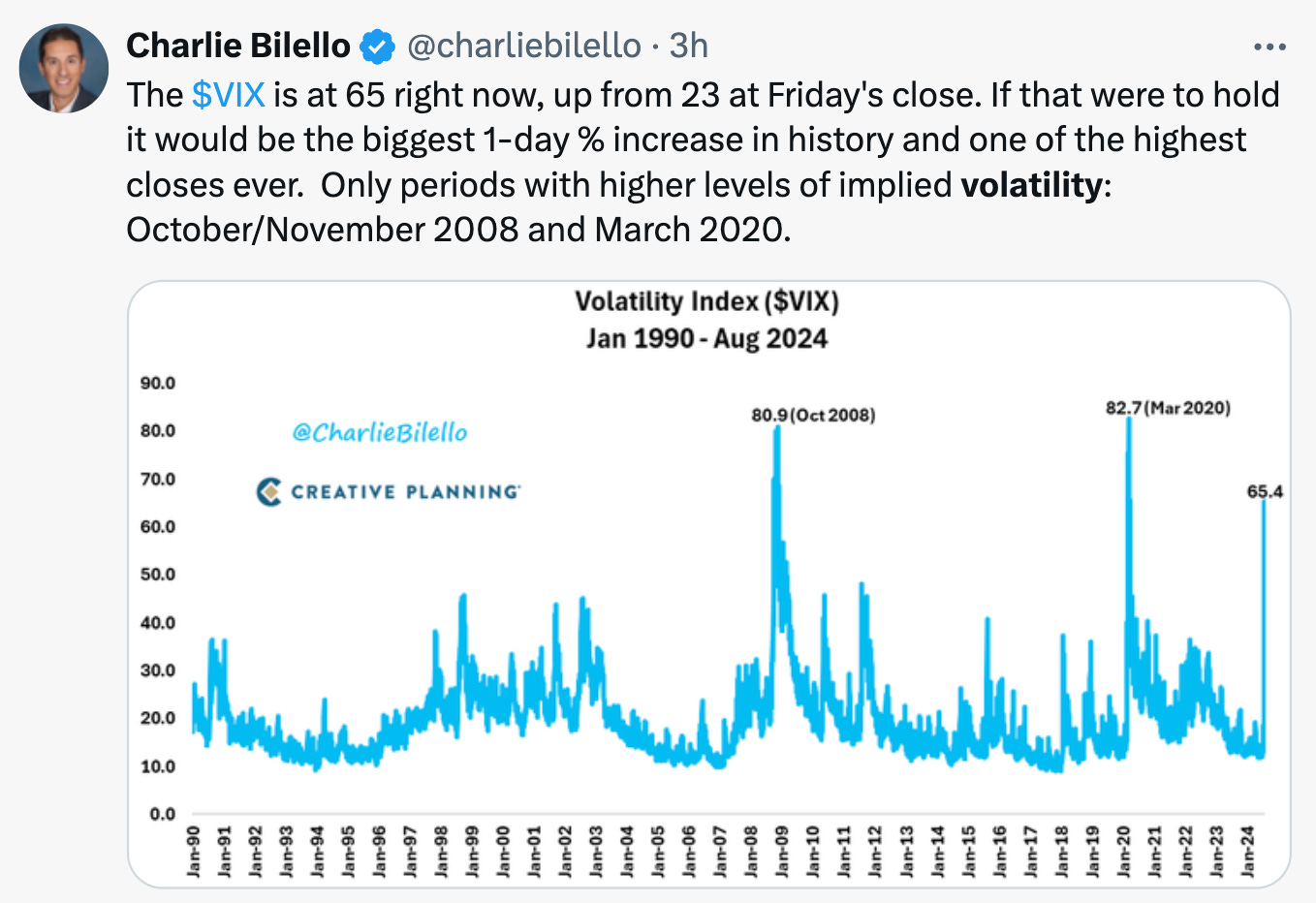
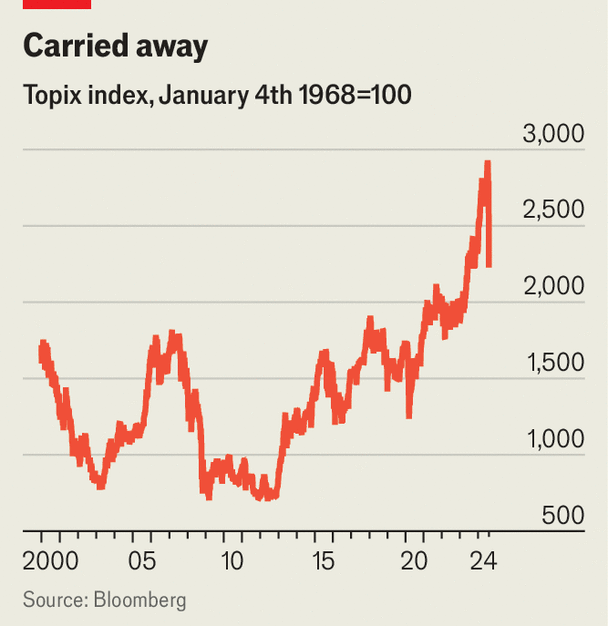
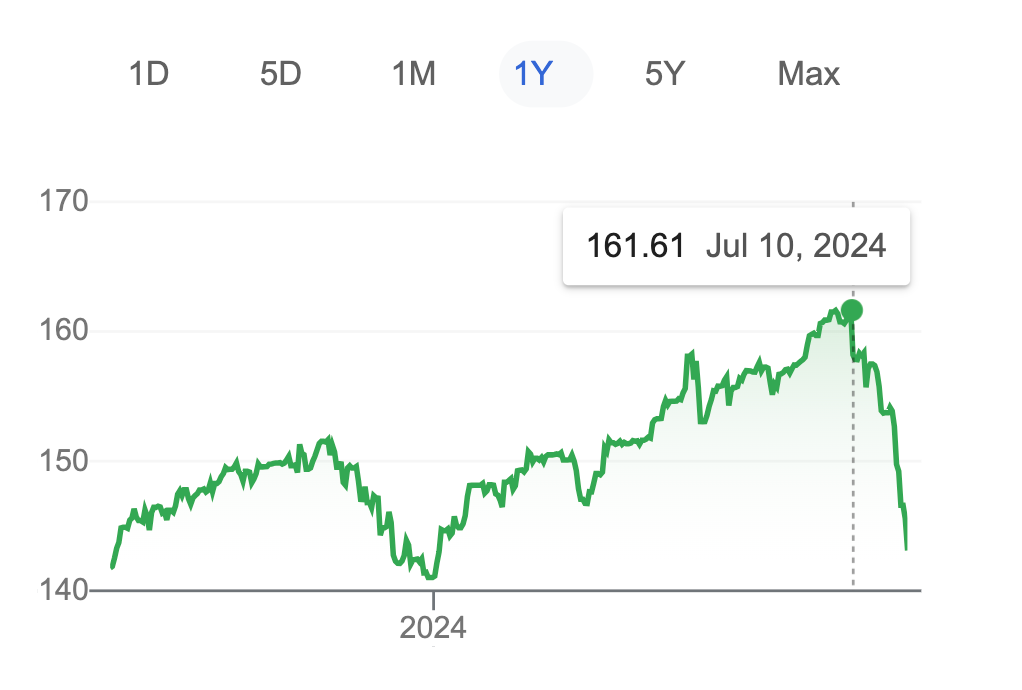
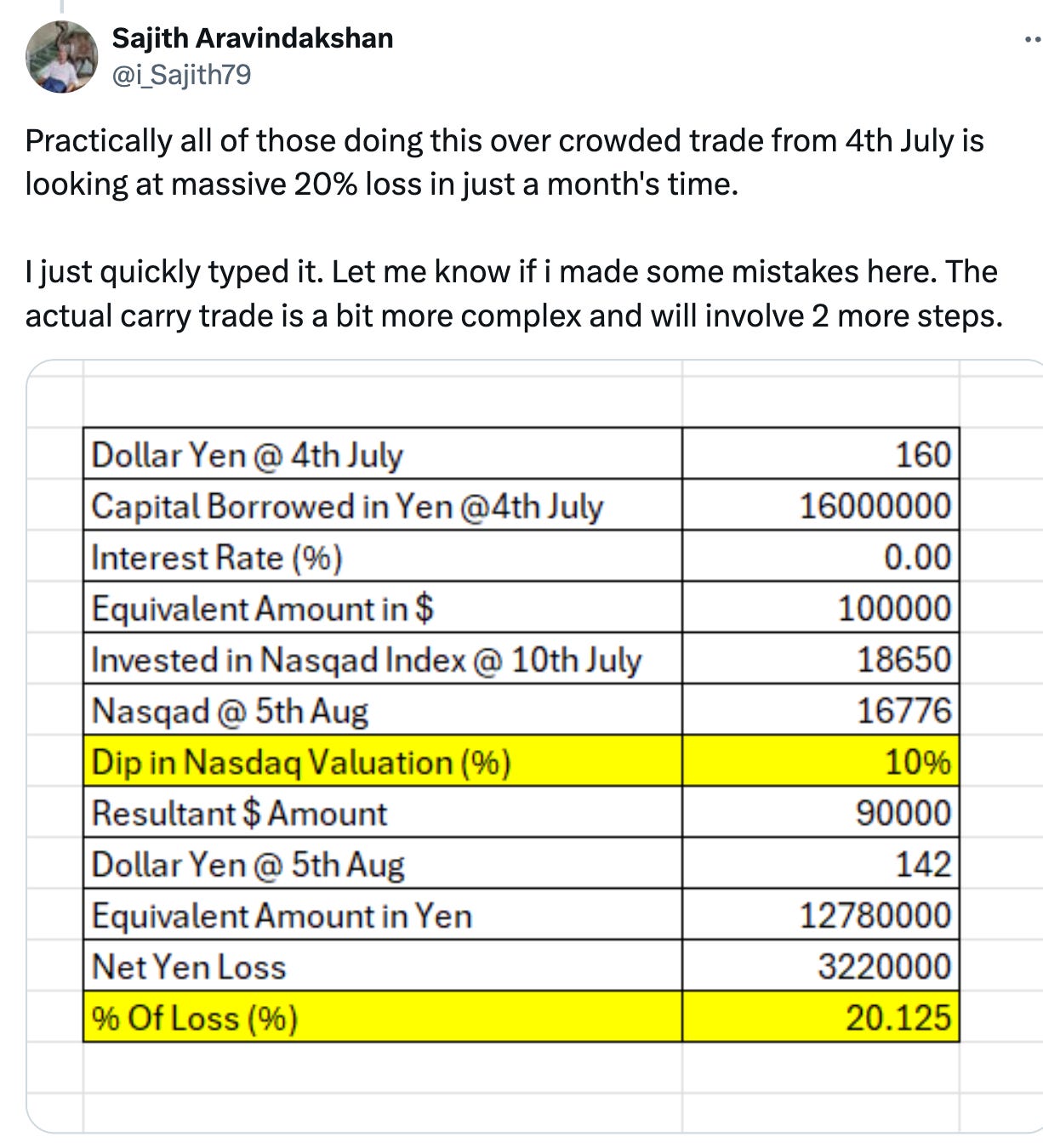
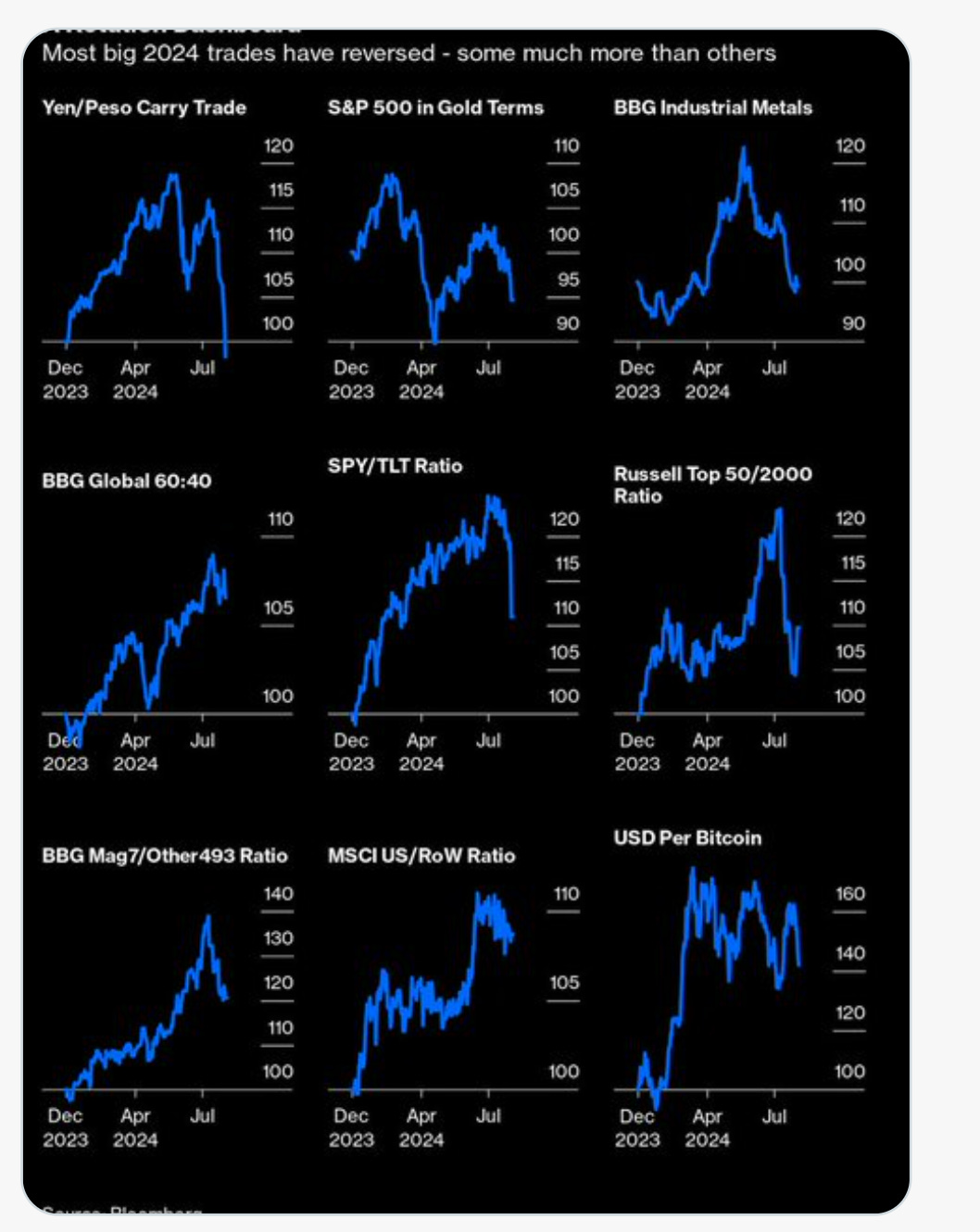
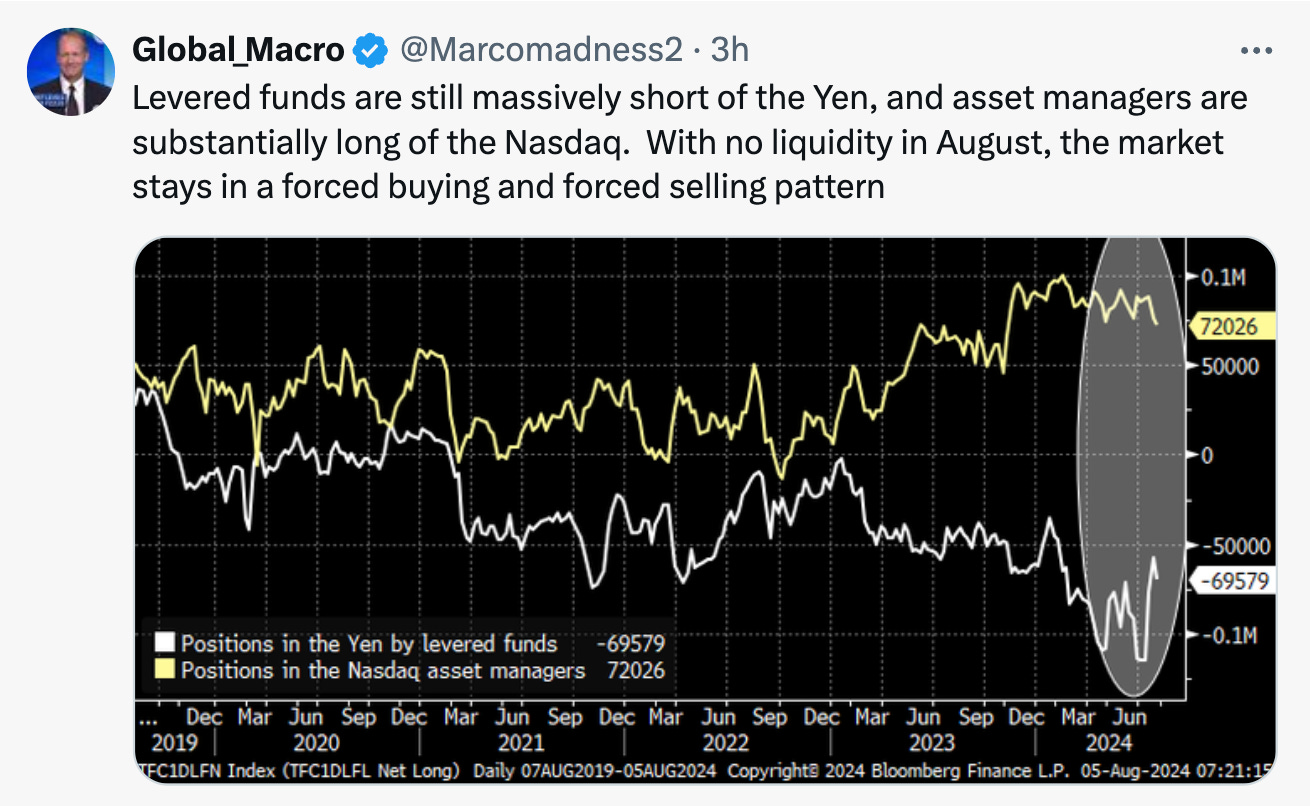
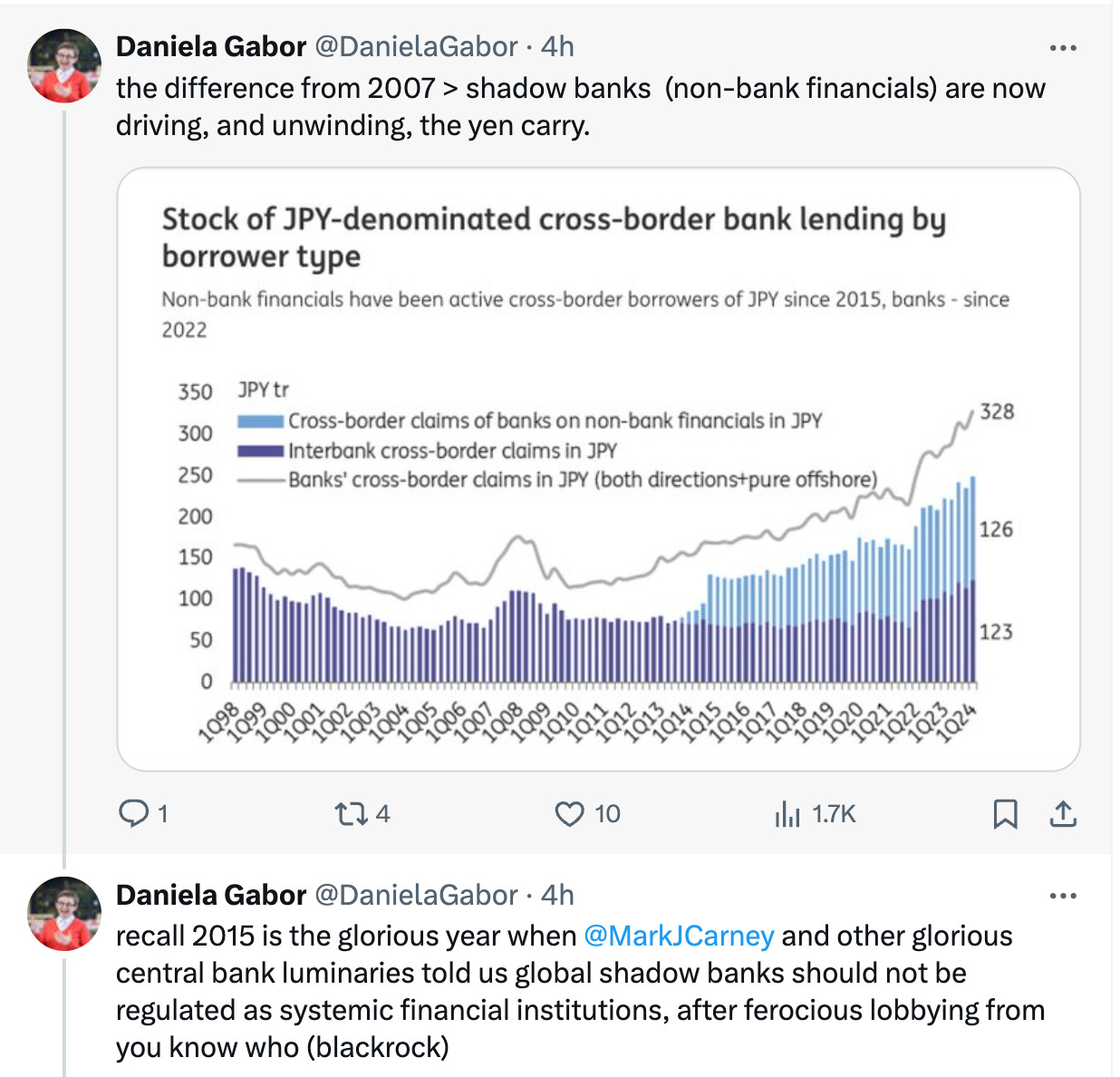
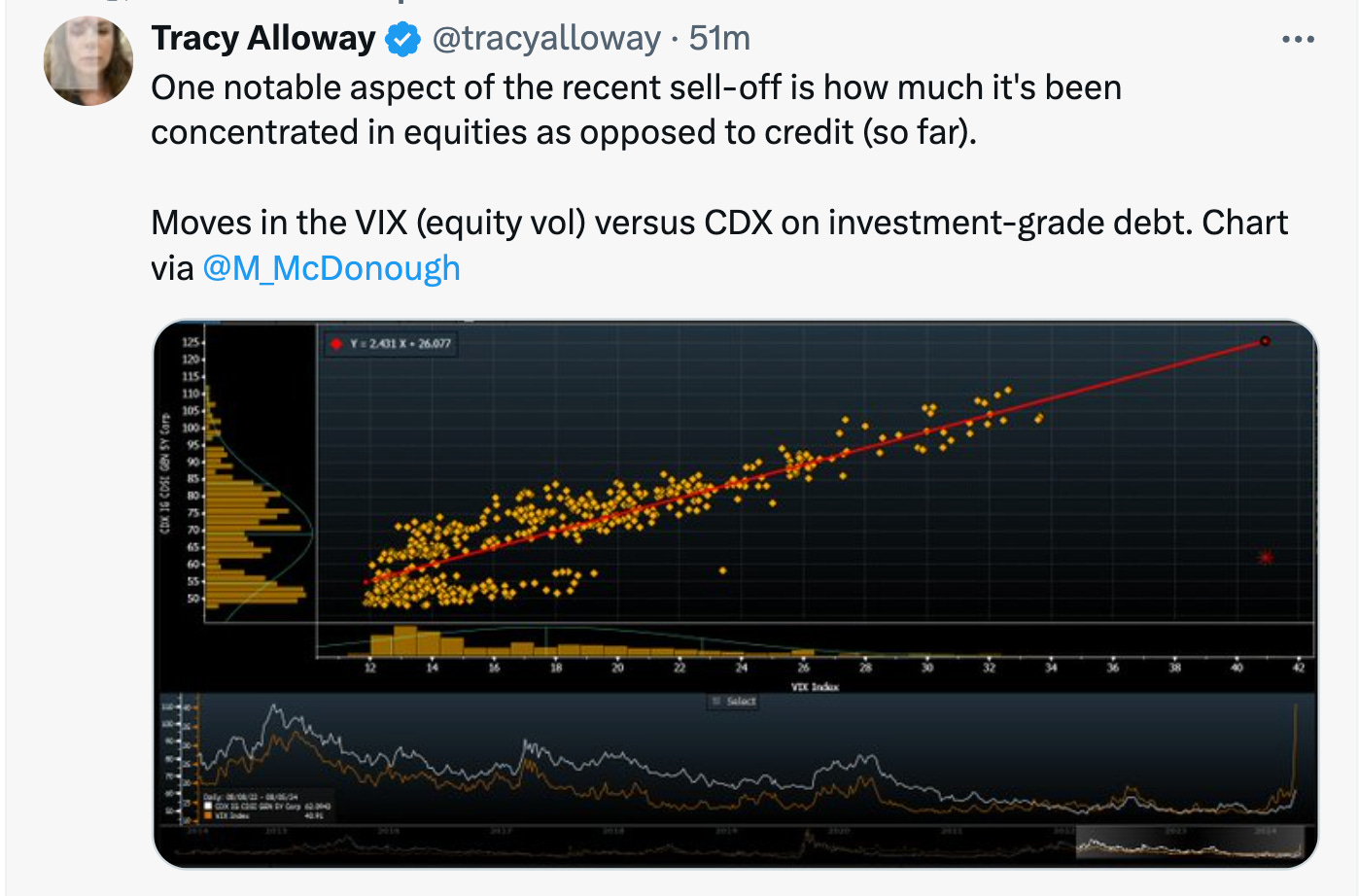
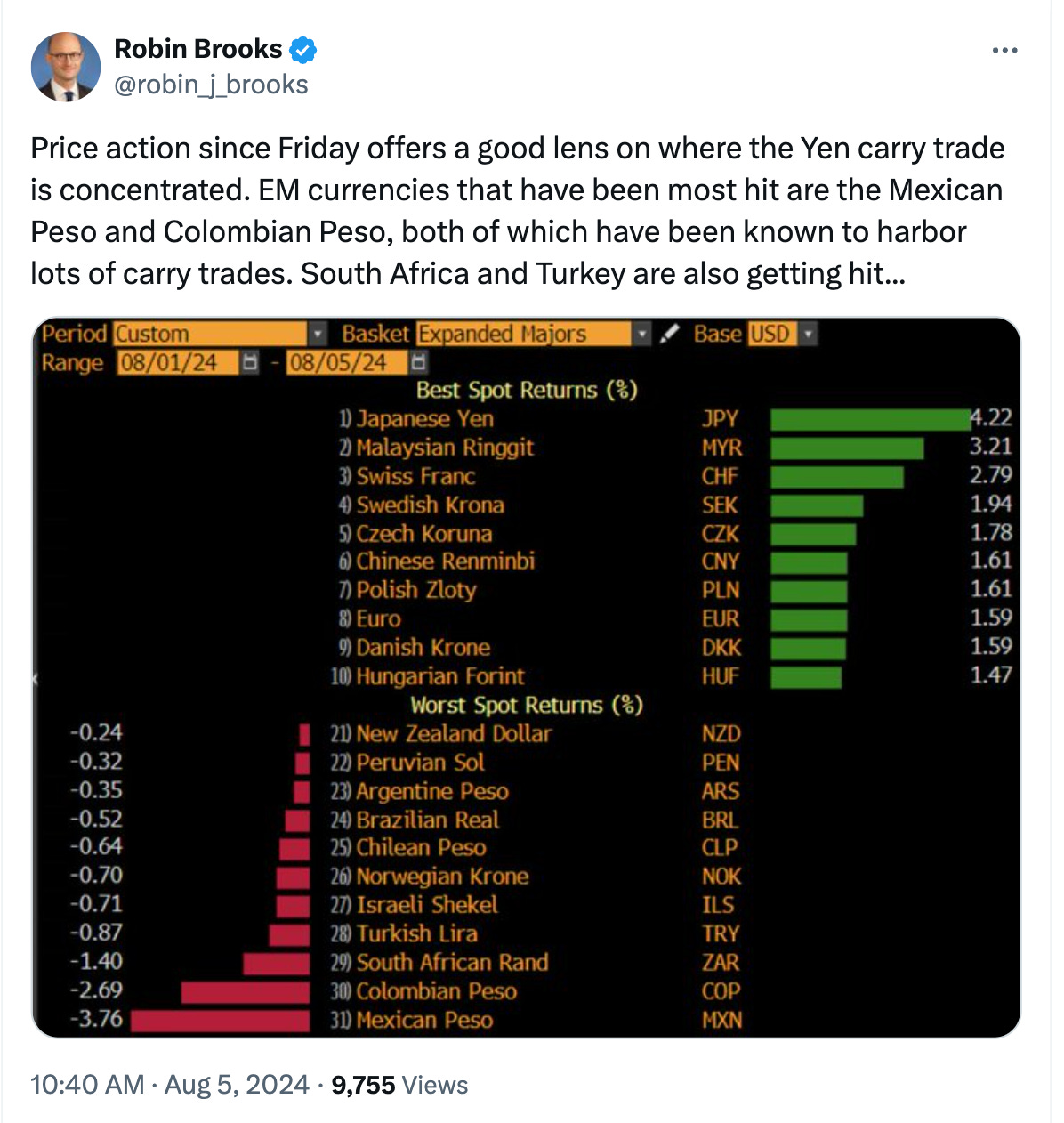
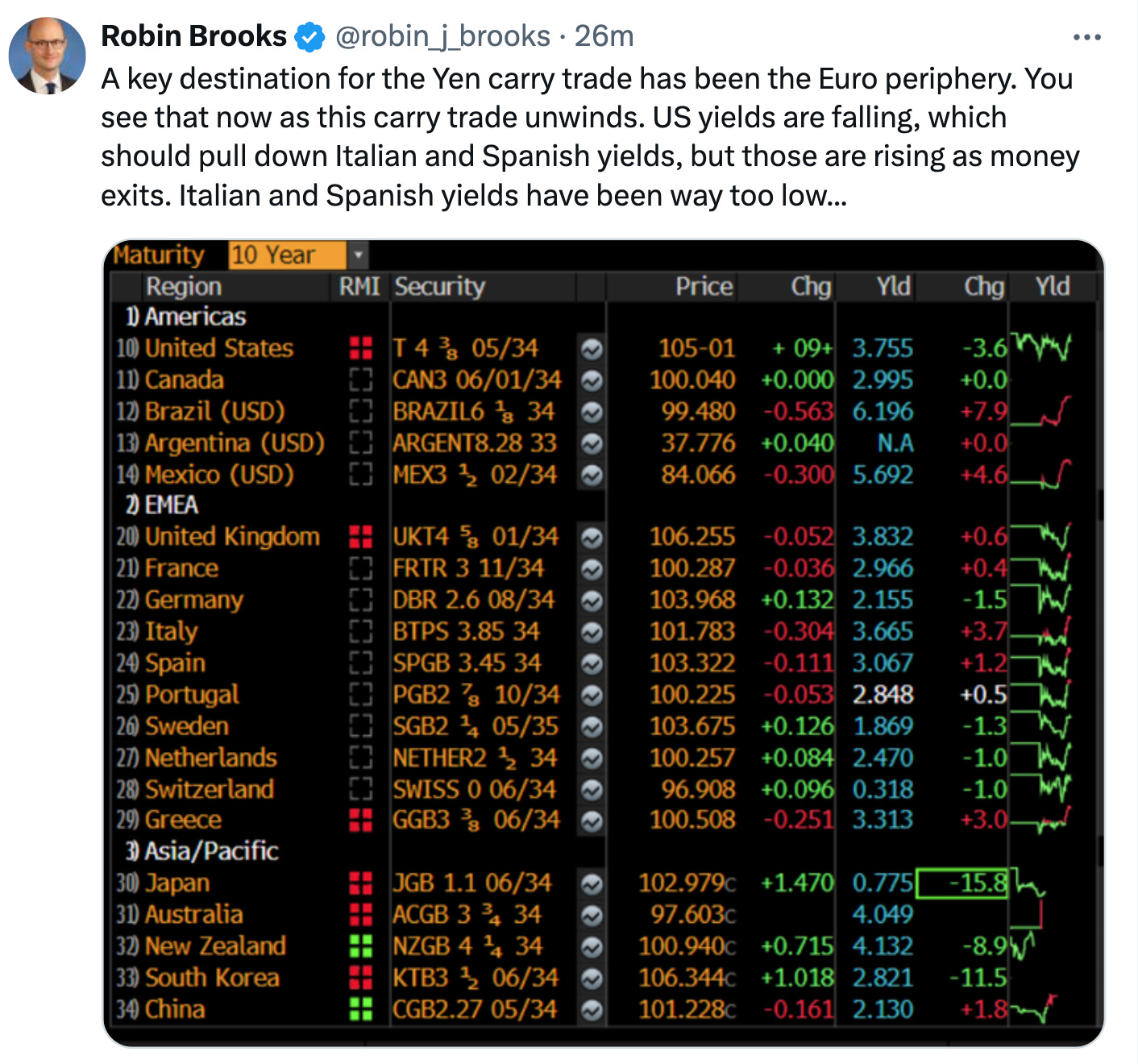
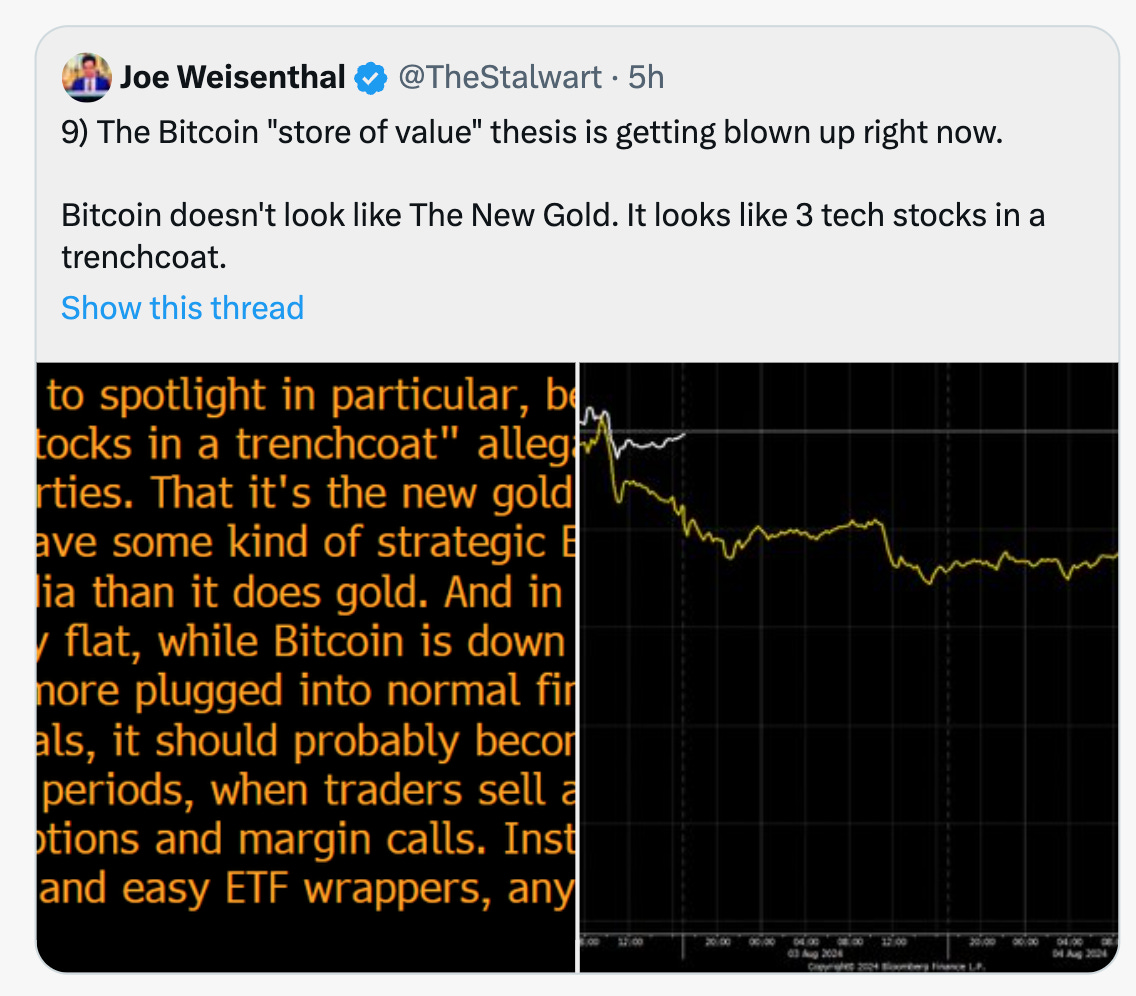

This is exactly the analysis I was looking for on everything that happened today. Thank you Adam!
I know this will sound naive, but the ups and downs in the stock market don't seem to have a lot to do with the overall health and productivity of the economy? Seems like a lot of it is driven by people betting with money, in a way that's not connected to any actual productive investment.